Jan & John Maggs Antiques
Little Moreton Hall
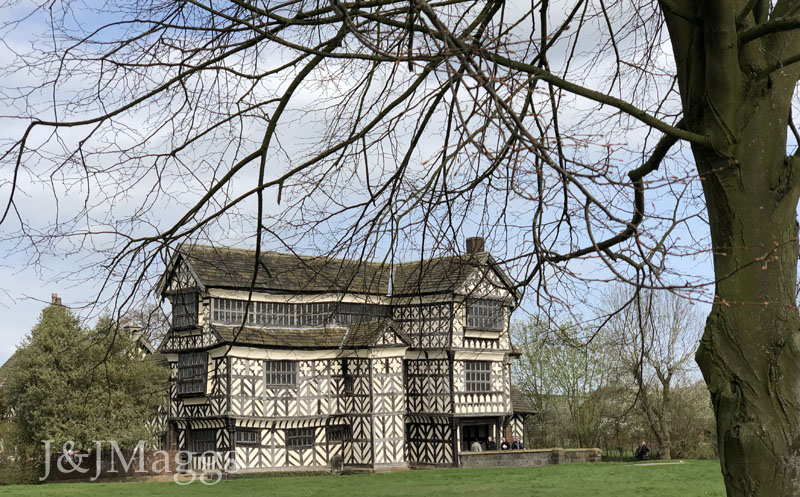
~ ~ ~ ~ ~ ~ ~ ~ ~ ~ ~ ~ ~ ~ ~ ~ ~ ~ ~ ~ ~ ~ ~ ~ ~ ~ ~ ~ ~ ~ ~ ~ ~ ~ ~ ~ ~ ~ ~ ~ ~ ~ ~ ~ ~ ~ ~ ~ ~ ~ ~ ~ ~ ~ ~ ~ ~ ~ ~ ~ ~ ~ ~
Our travels in England have rarely taken us to Cheshire but on our recent
trip, following a fair in Somerset, we decided to drive along the Welsh
border on our way to Derbyshire and to visit one of the most
picturesque and well-preserved early manor houses in England. Our
destination, Little Moreton Hall, described by the British National Trust as
"lifted straight from a fairy story, a gingerbread house".
Little Moreton Hall was begun around 1504 by William
Moreton, a wealthy Cheshire landowner, and was completed about 100 years later, shortly
after the death of Elizabeth I. At the time of Elizabeth's accession to the throne, the Moreton estate included 1,360 acres and several buildings, including two
water mills, and a brewery. About half of the land was farmed, while much of
the remainder was pasture.

Although created during the English Renaissance,
architectural historians classify it as a medieval building, especially
since it appears to have been built inside an existing moat and probably on
top of an earlier foundation. It is timber-framed throughout, suggesting
that the timbers might have been harvested from large oak trees on the estate.

Apart from its massive size and quirky form, one of the most impressive features of Little Moreton Hall is the amount of glass that was installed to admit light into the rooms. It has been stated that the windows, of which there are many, contain 30,000 small leaded panes. This set of windows, located outside the entrance to the great hall, was created by "Richard Dale, carpenter". Much of the 16th-century glass remains, and the building appears to sparkle when approached from a distance.
~ ~ ~ ~ ~ ~ ~ ~ ~ ~ ~ ~ ~ ~ ~ ~ ~ ~ ~ ~ ~ ~ ~ ~ ~ ~ ~ ~ ~ ~ ~ ~ ~ ~ ~ ~ ~ ~ ~ ~ ~ ~ ~ ~ ~ ~ ~ ~ ~ ~ ~ ~ ~ ~ ~ ~ ~ ~ ~ ~ ~ ~ ~
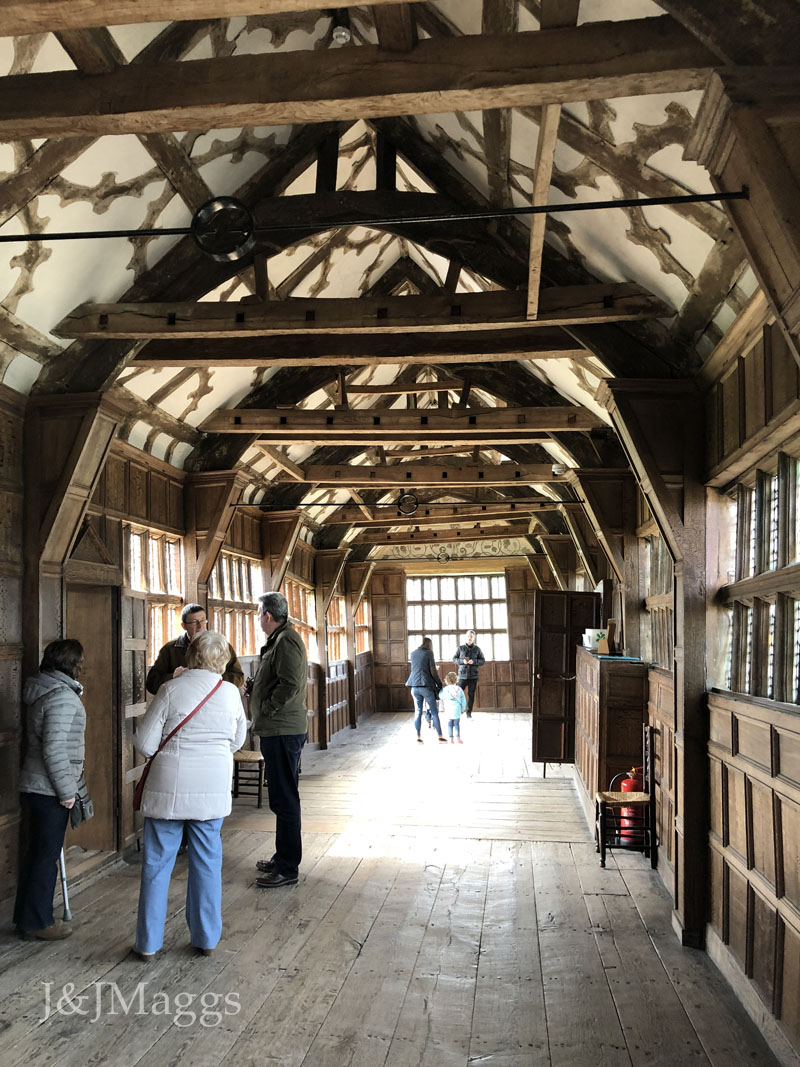
The Long Gallery, which gives the building its
unique appearance, occupies the upper floor of the south wing, and the stone
slabs of its roof have caused the lower floor to buckle under the weight.
This buckling has caused the gallery to be described as "a gloriously long and crooked space,
the wide floorboards rising up and down like waves and the walls leaning
outwards at different angles." Crossbeams were added in the 17th
century to keep the entire wing from collapsing outward.

In addition to the building and grounds themselves,
there is much to see inside, including three pieces of the Moreton’s
original furniture: this “cubborde of boxes”, cited in the 1599 inventory,
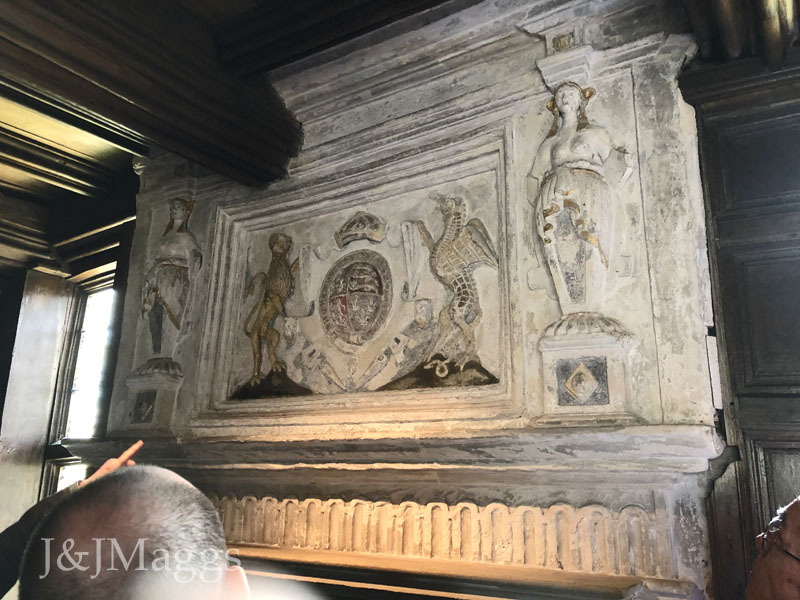
The fireplace in the parlor is adorned with a
plaster overmantel
(c.
1599
~ ~ ~ ~ ~ ~ ~ ~ ~ ~ ~ ~ ~ ~ ~ ~ ~ ~ ~ ~ ~ ~ ~ ~ ~ ~ ~ ~ ~ ~ ~ ~ ~ ~ ~ ~ ~ ~ ~ ~ ~ ~ ~ ~ ~ ~ ~ ~ ~ ~ ~ ~ ~ ~ ~ ~ ~ ~ ~ ~ ~ ~ ~
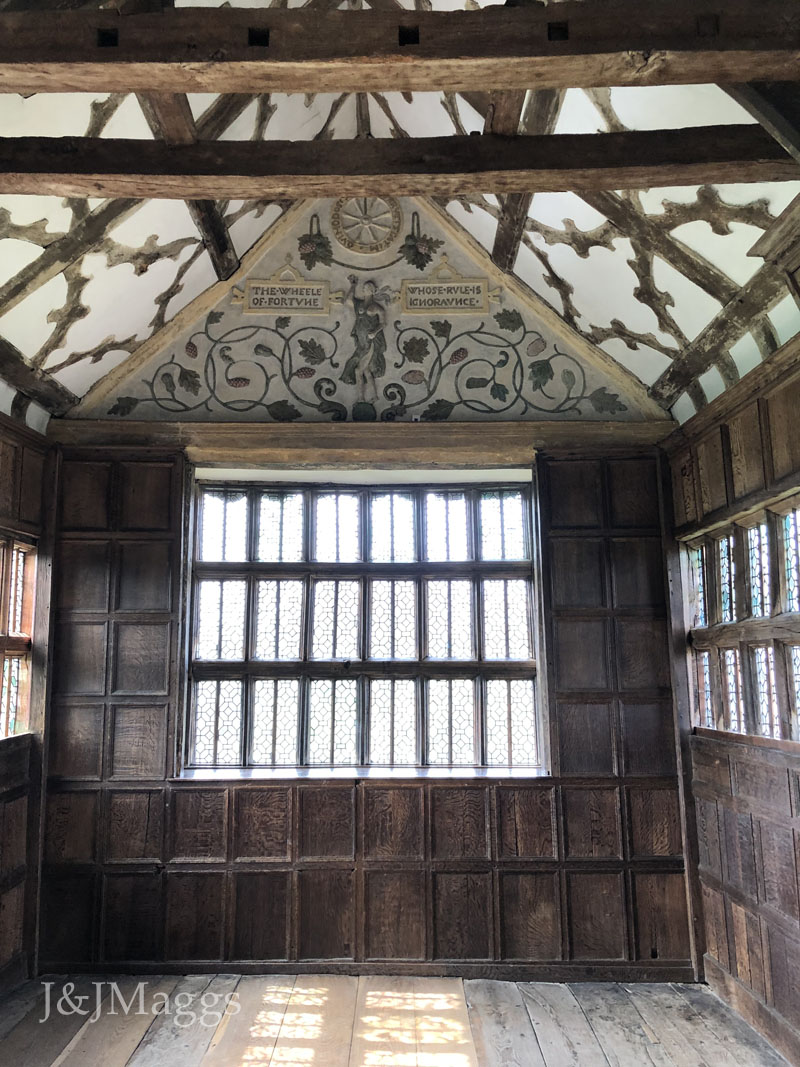
In one of the tympana of the long gallery, this plaster depiction of Fortune, copied from Robert Recorde's Castle of Knowledge (1556)

In its 500+ year history, Little Moreton Hall has never been sold; it remained the property of the Moreton family until it was transferred to the National Trust in 1938. It is now open to the public most of the year and staffed by devoted, knowledgeable people.
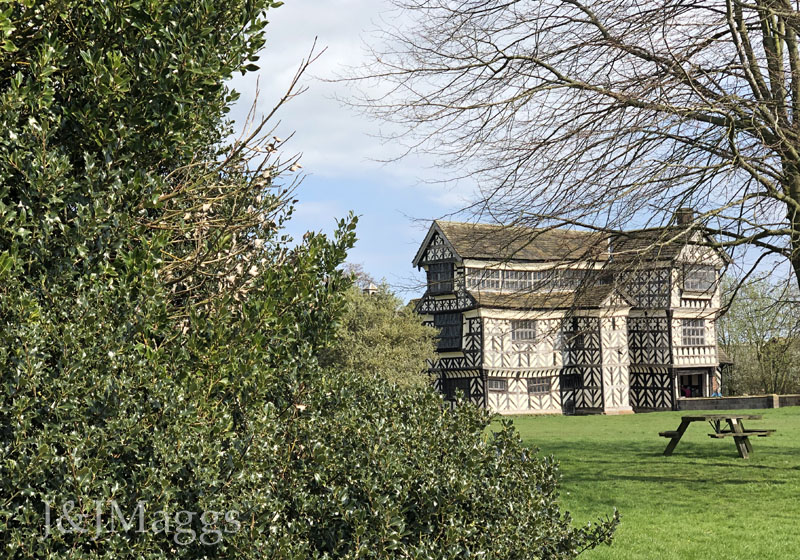
Little Moreton Hall is an extraordinary piece of
English social and architectural history. We’ll surely return; perhaps we’ll
see you there.
~ ~ ~ ~ ~ ~ ~ ~ ~ ~ ~ ~ ~ ~ ~ ~ ~ ~ ~ ~ ~ ~ ~ ~ ~ ~ ~ ~ ~ ~ ~ ~ ~ ~ ~ ~ ~ ~ ~ ~ ~ ~ ~ ~ ~ ~ ~ ~ ~ ~ ~ ~ ~ ~ ~ ~ ~ ~ ~ ~ ~ ~ ~
Click to return to the Jan & John Maggs home page
